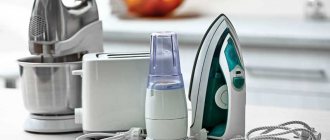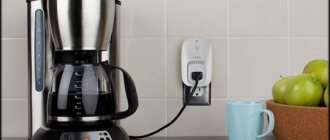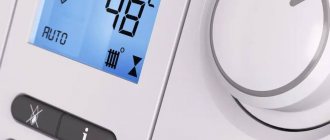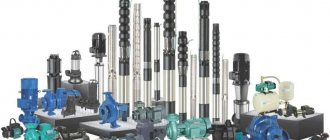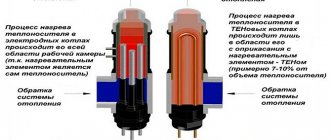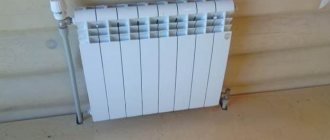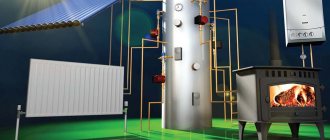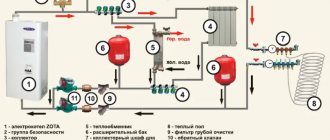Calculating the electricity consumption of energy-receiving devices installed or planned to be installed in your home can be useful if you are planning to upgrade your home electrical network (lay a new cable, install a new protection device, etc.) or are not sure that the old electrical wiring will withstand new electrical appliances.
In addition, the calculation in question is able to assess the accuracy of the electrical energy meter readings and even help plan your expenses in the area of utility consumption.
How to calculate electricity consumption knowing the power
Whatever the goals of the calculation of electricity consumption, it is carried out according to the rated power of the energy receivers. In other words, at the first stage of the calculation, you need to collect data on the technical characteristics of all the devices you use - from a light bulb on the ceiling to a washing machine.
Important . Information about the power consumption of an electrical appliance is usually available on its nameplate (this is a metal plate or sticker on its back wall or on the bottom), as well as in the technical documentation for this power receiving device. If you do not have access to the necessary information, you can find it on the Internet by entering the name of the electrical appliance into the search engine.
In addition, you can use the table of power of electrical appliances, which will be given below. The data in this table are averaged for all devices for a particular purpose. Your electrical equipment may have a power that differs from the tabular data.
| Energy-receiving household devices | Rated power, W | Energy-receiving household devices | Rated power, W |
| TV | 60-300 | Warm floor (per 1 sq. m) | 60 |
| Fridge | 70-300 | Kettle | 1500—2000 |
| Washing machine | 1500—2600 | Instantaneous water heater | 1500—2000 |
| Electric stove | 1000—2500 | Dishwasher | 2000 |
| Electric heater | 1000—4000 | Lighting (per 1 sq. m) | 30 |
| Air conditioner | 800-1200 | Boiler | 700-2000 |
| Hairdryer | 400-2000 | Computer (desktop) | 70-500 |
| Iron | 400-2500 | Laptop | 30-200 |
| Vacuum cleaner | 800-2500 | Printer | 11-22 |
So, in order to determine the electrical energy consumption of household electrical appliances, it is necessary to know the power consumed by each of them, as well as the operating time of each of them. In this case, the formula for calculating electricity consumption by power of one power receiving device will look like this:
W=P*T, kW*h,
where P is the rated power of this device, kW; T is its operating time, hours.
Simultaneously connected household appliances
If you want to calculate the power consumption in a section of the electrical network to which a number of devices are connected, or all power consumption in a house or apartment, you should sum up the power consumption of all devices included in this circuit. That is, the calculation formula in this case will take the following form:
W=ΣP*T, kW*h.
Electricity meter
Electric meters today are found in almost every apartment or house. They help you pay exactly how much electricity is consumed and, if necessary, save it.
Previously, all electricity meters were mechanical. Their display looked like rotating drums with numbers that showed the amount of electricity consumed. Now this is a digital display with many additional functions, such as dividing consumption into tariff zones, calculating average consumption, indicating the presence of current in the network, and so on.
Using a meter, you can calculate the electricity consumption of a specific device. To do this, you need to turn off all other equipment in the house and leave only the one that interests you. Record the time, for example an hour. And see how many kW*hours the meter will “wind up”. If you calculate the time over a shorter period of time, then you should multiply these meter readings by the desired coefficient.
It should be noted that most devices consume less than 1 kWh. In this case, you should pay attention to the last digit, which is highlighted in red or after the decimal point. These are tenths. If you take them into account, the indicator will be more accurate.
Not all equipment constantly consumes the amount of electricity indicated in the passport. Depending on the operating mode, this number is usually lower. The refrigerator freezes only when the temperature rises above a predetermined interval, and the washing machine consumes more if the heating elements or pump are turned on, but is practically idle when the laundry is soaking. Energy consumption is calculated based on the power of each device and their total.
Application of energy consumption calculations in practice
Let's look at examples of how you can calculate the kilowatts consumed over a certain period of time by one or another energy receiver(s).
Example 1. Calculate the monthly power consumption of a professional hair dryer for personal daily use.
Hair dryers used by professional hairdressers have impressive power. Let's say the rated power of our device is 2000 W. At the same time, one person uses it and spends about 10 minutes a day drying and styling their hair with it. Since the task does not contain specific information about how long the billing month lasts, we use the average number of days - 30.4. Thus, we have the following solution to the problem under consideration:
W=P*T=2*10/60*30.4=10.14 kW*h.
Example 2. Calculate the annual power consumption in a room in which the following items of electrical equipment are located and periodically used: TV, air conditioner, laptop.
At the same time, the owner of the room watches TV only in the morning, getting ready for work, and in the evening during dinner - a total of 1.5 hours a day. He works on his laptop in the evenings - about 2 hours a day. The air conditioner is used exclusively for cooling the air in the summer, and only 3 weeks in total are hot enough for this.
In the age of total visualization
Based on the above, we have:
W=0.15*1.5*365+0.10*2*365+1.00*3*7*24=82.13+73.00+504.00=659.13 kWh.
Important! It should be borne in mind that not every energy-receiving device operates at full power in one mode or another. In particular, an air conditioner or refrigeration unit set to low cooling will consume power that will be lower than declared.
Fridge
According to the technical data sheet of most refrigerators, they consume about 230-450 kWh per year. It is enough to divide this number by 12 to get a monthly consumption of about 20-30 kW. It will vary depending on the size of the refrigerator, the presence of a freezer, the density of the rubber bands, the presence of energy-saving modes and the food load. Also, to assess consumption, it is necessary to take into account external conditions. It will directly depend on the air temperature in the room.
Electrical appliance utilization (load) factor
Such uneven consumption is taken into account by a specialized parameter - the utilization (load) factor, defined as the ratio of actual power to nominal power. To take it into account in the calculation, it is enough to multiply the rated power of the power receiver by the specified coefficient.
The utilization rates for a number of household electrical appliances are shown in the table below.
| Energy receiving devices | Coefficient use |
| Lighting | 0,7 |
| TV | 0,7 |
| Consumer electronics | 0,2 |
| Fridge | 0,8 |
| Dishwasher | 0,1 |
| Washing machine | 0,1 |
| Iron | 0,1 |
| Vacuum cleaner | 0,1 |
| Boiler | 0,2 |
| Electric heater | 0,5 |
Converting amperes to kilowatts
In some cases, only one number may be indicated in the passport or on the device itself - current (amps). To get watts from this parameter, simply multiply it by voltage. If the voltage is not specified, then the value is 220 V (for devices designed for operation in Europe or Russia). This calculation method will be correct for most household electrical appliances.
It's worth noting that when you multiply volts by amps, you get watts, not kilowatts. To find out the value of the latter, you need to divide the resulting value by 1000.
Washing machine
The consumption of a washing machine is usually specified in the passport. The numbers depend on the program and are indicated not for hourly consumption, but for the entire cycle. The power of an average device is 2-2.5 kW; in practice, 1.5 kW*hour is consumed per hour. When using a washing machine twice a week with a 2-hour cycle, you get about 20 kWh.
However, this figure will be higher if the washing machine has a drying mode, the family is large or there are small children.
Kettle and iron
These devices are considered the most expensive in terms of energy costs. Despite the fact that they do not work for long, the consumption for both devices is still about 30 kWh per month.
Not all appliances that consume electricity in the house are listed. Additionally, you will need to count such things as a multicooker, microwave oven, vacuum cleaner, phone chargers and others, if available. Maximum consumption is observed if an electric or induction stove, air conditioner, boiler or electric heaters are used.
When you have to pay taking into account the standards if you have an electric meter
In some situations, consumers have to pay according to standards even if they have an electric meter. This is necessary if:
- the metering device is out of order;
- the owner of the premises did not report indicator data to the utility company;
- access to the metering device is not provided to an employee of the energy supply company;
- the meter was damaged intentionally.
If the consumer does not provide the management company with information regarding the meter readings, the amount for the next quarter is calculated based on the average value. After the specified period, if the situation has not changed, payment is calculated according to the norms.
The breakdown of the electric meter must be confirmed by a corresponding report drawn up based on the results of an inspection of the device by a representative of the utility company. The owner must immediately report problems with the operation of the device orally (in person or by telephone) or in writing in order to record the fact of the breakdown.
Important! The electric meter can only be used within the verification period. If the verification is overdue, the meter readings are invalid.
The owner is obliged to monitor the condition of the electric meter and promptly provide the device for verification to specialized organizations that have the appropriate license.
Calculation method
When calculating payment for consumed resources without a meter, the following formula is used:
- C – total payment amount;
- K – number of people living in the living space;
- L – indicator of the limit approved in the region;
- Ts is the size of the tariff rate for one kWh, in accordance with the regulations of local authorities.
The use of an additional increasing factor is provided. Its introduction is intended to encourage citizens to install meters. The increasing factor is not used only in a situation where the installation of an individual meter is not possible due to the disrepair of the housing or the poor condition of the electrical networks.
Expert opinion
It-Technology, Electrical power and electronics specialist
Ask questions to the “Specialist for modernization of energy generation systems”
Microwave oven Heat consumption depends much less on residents, since even installing taps and regulators on batteries in our heating system does not guarantee lower fuel consumption for heating. Ask, I'm in touch!
Energy Saving Tips
Having analyzed energy costs, many owners involuntarily wonder if it is possible to somehow reduce them? Typically, large consumption is affected by refrigerators and lamps.
To reduce the consumption of a refrigerator, it must be moved away from the wall so that it is better ventilated, or replaced with a new one with better consumption readings.
It is optimal to use energy-saving light bulbs. They come in two types: LED and mercury. The latter are cheaper, but less durable, have lower efficiency and require special disposal rules. LED lamps are the best option. Provided they are made with high quality, they last a long time, can be produced in different colors, adjustable power, and as a rule, the manufacturer gives them a long warranty.
Tariffs depending on the time of day
Since energy consumption drops significantly at night, which complicates the operation of power plants, programs have been developed that allow you to pay less during the least busy period. This was done so that when installing a two- or three-tariff meter, people would use some of their electrical appliances at night and save money, while the load on the networks would be distributed more evenly.
In most regions there are two- or multi- (most often three-) tariff zones. In the first case (2-tariff zones), the cost of electricity at night falls by 2 times compared to the standard tariff. In the second, three tariff zones are distinguished. The first is night with a coefficient of 0.4. The second is half-peak with a coefficient of 1. The third is peak, with a coefficient of 1.5. Thus, for consumption in the night zone you need to pay 40% of the standard tariff, and in the peak zone - one and a half times more.
To use this type of tariffing, special electronic meters are required, in which meter readings are given separately for each zone. Some of them send the received data to the controller automatically, and, accordingly, the correct payment is received without the need to enter readings manually.
In order to understand how to calculate metered electricity consumed according to the principle of several tariffs, it is necessary to take the values for each tariff zone, multiply them by the standard tariff and by the normalization coefficient. The amount of consumption for all tariffs must be equal to the total consumption, which is also indicated on the meter.
The latter helps ensure that the calculations are made correctly.
